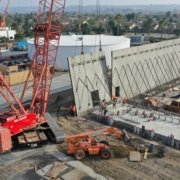Facing ‘Dire Water Shortages,’ California Bans Delta Pumping
In an aggressive move to address “immediate and dire water shortages,” California’s water board today unanimously approved emergency regulations to temporarily stop thousands of farmers, landowners and others from diverting water from from the Sacramento-San Joaquin Delta watershed.
The new regulations — the first to take such widespread action for the massive Delta watershed stretching from Fresno to the border with Oregon — could lead to formal curtailment orders for about 5,700 water rights holders as soon as Aug. 16. The decision comes on the heels of curtailment orders issued to nearly 900 water users along the drought-stricken Russian River, with 222 more expected next week.











